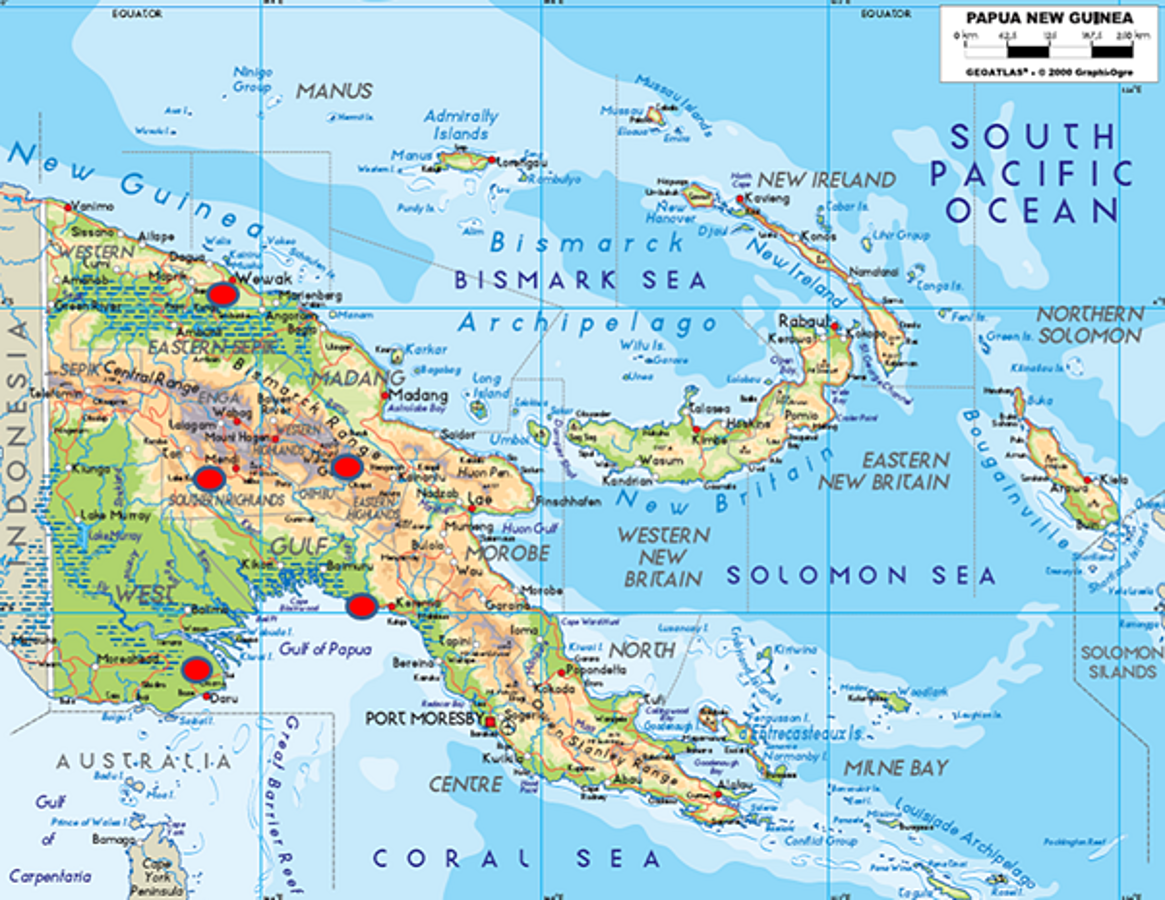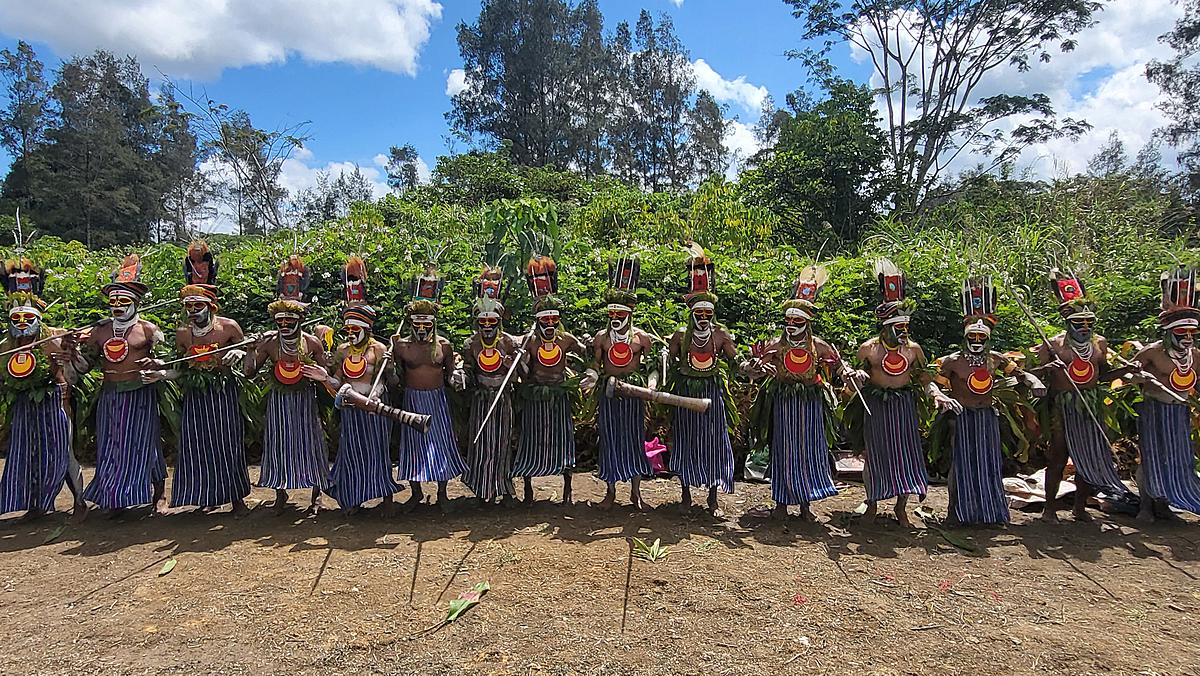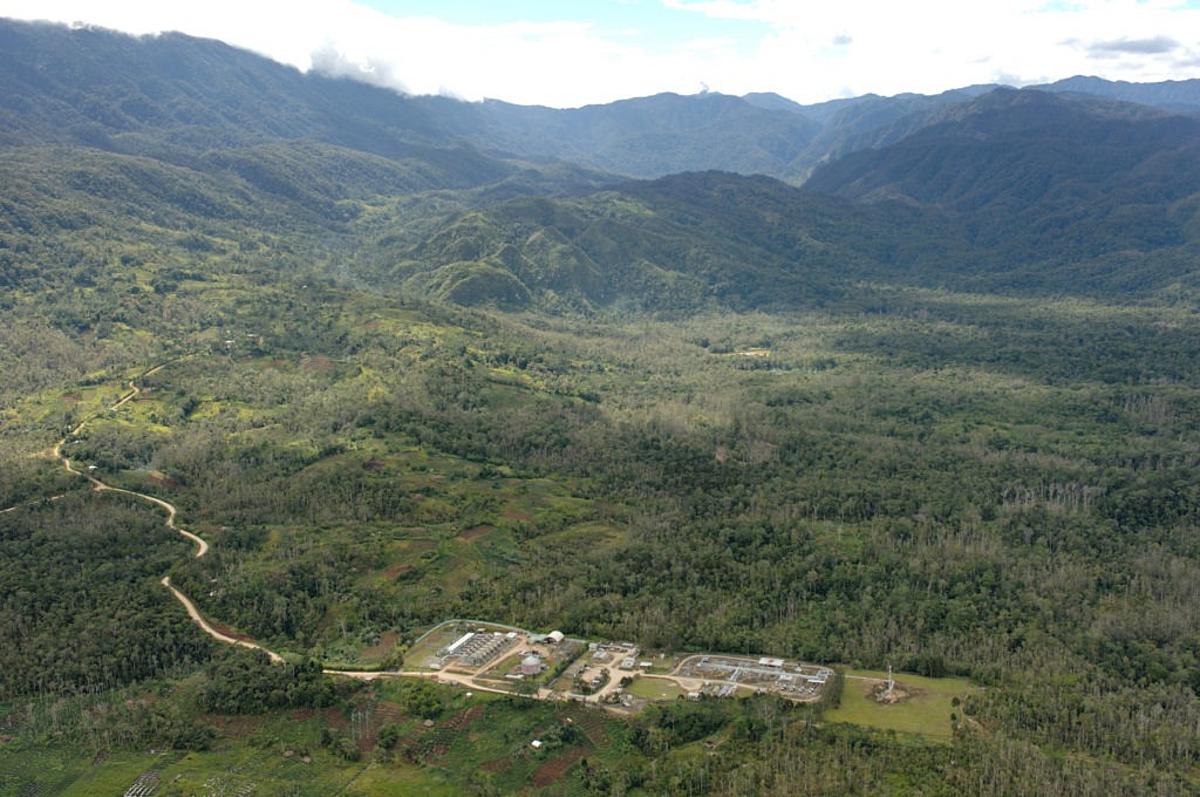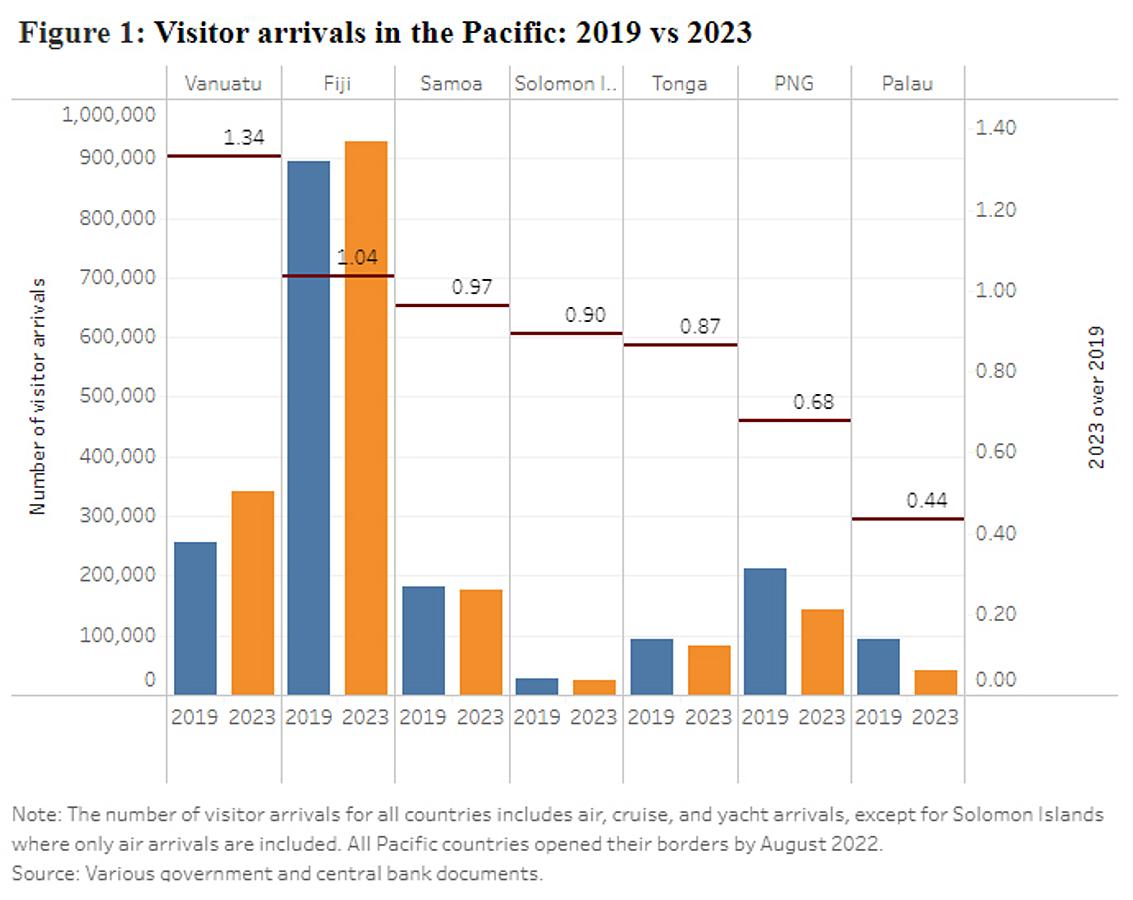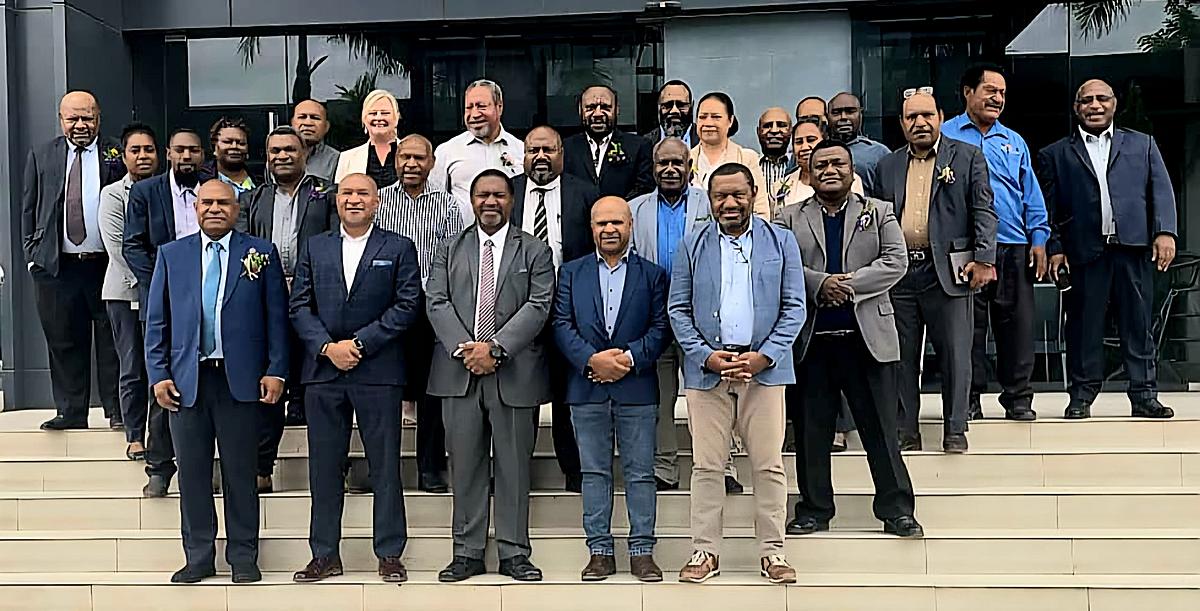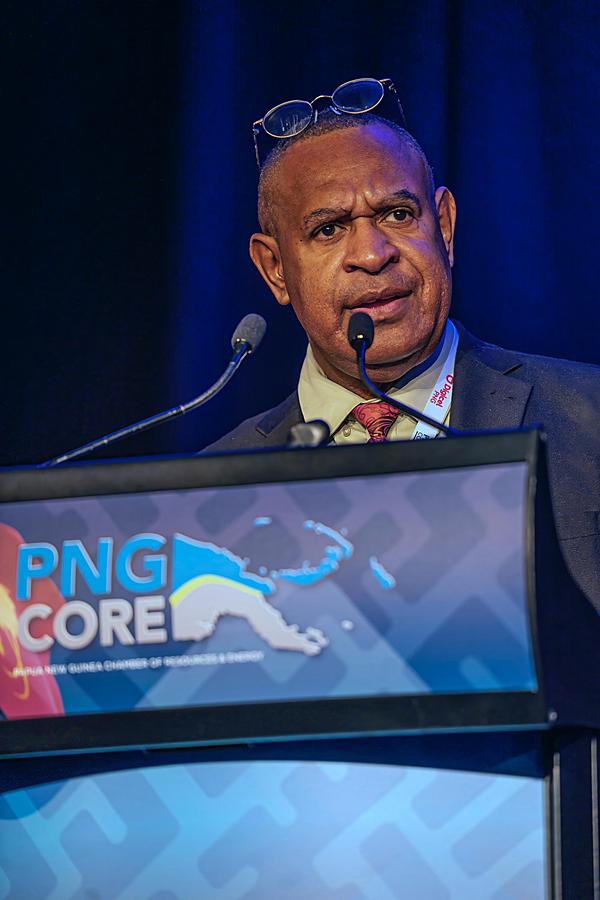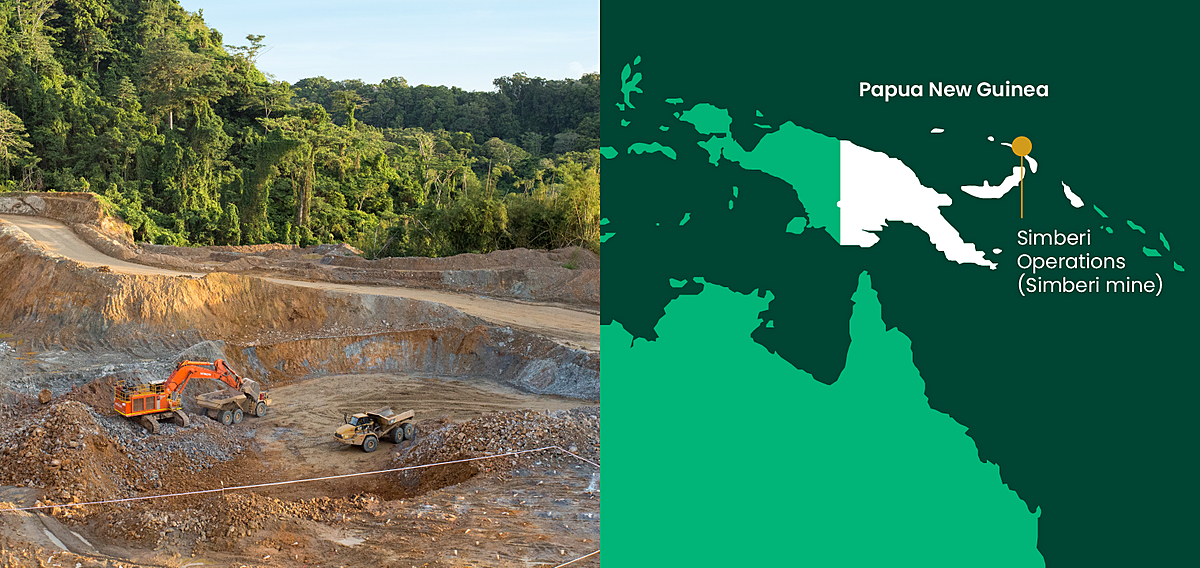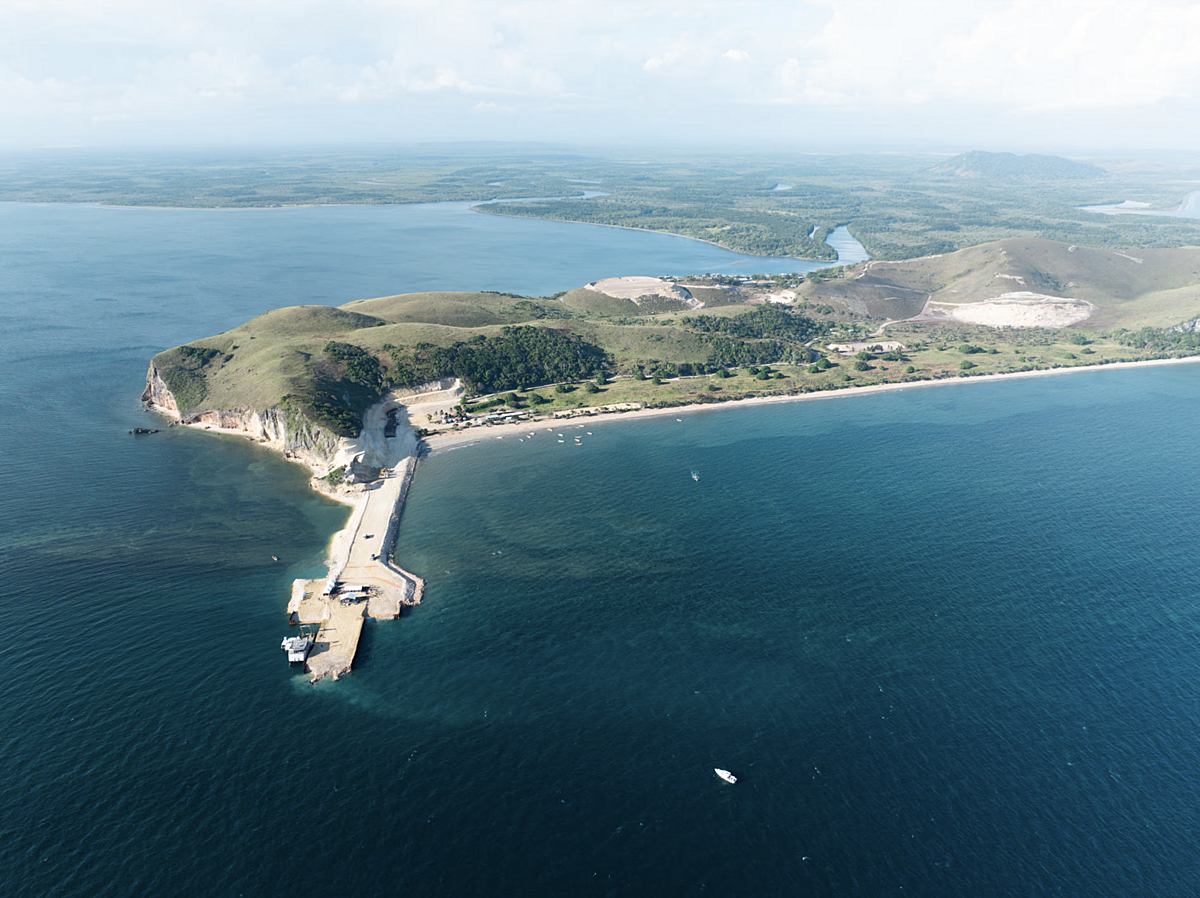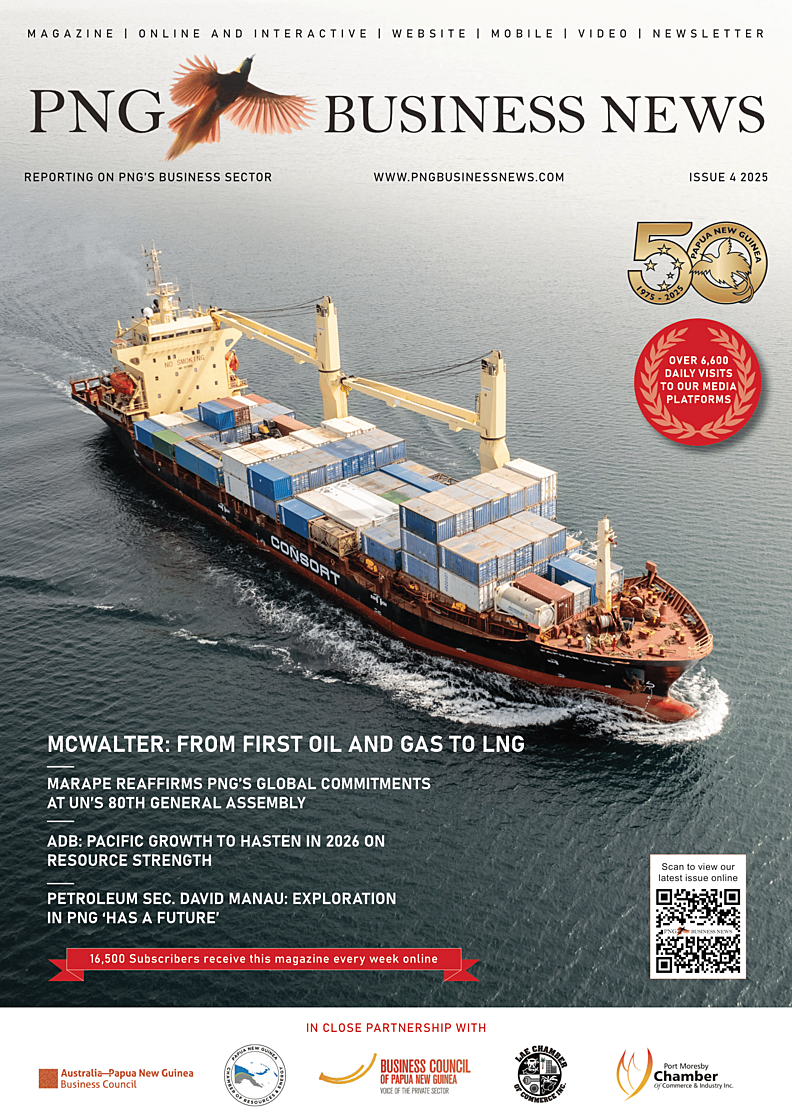Commentary by: Michael McWalter
(First of two parts)
When we examine the ingredients required for the development of petroleum accumulations, Papua New Guinea has all that is required, though we do not necessarily know the links between all of them. But the evidence of petroleum endowment is manifest, widespread, and substantial.
Oil abounds in Papua New Guinea. We know this from the oil seeps first identified by gold prospectors in 1911 along the Vailala River in the Gulf Province, to the seeps in the Nipa Valley in the Southern Highlands - used traditionally as body paint and as a kerosene substitute, and sold in the local market, and from the Matapau oil seeps in the Wewak Basin of the East Sepik, which hosted Papua New Guinea’s first oil production pre-World War Two, or the greenish-yellow oil that oozes out of the ground at Wonia, south of the Fly River in the vast Western Province. There is nothing quite like the presence of oil to excite oilmen, and that is what Papua New Guinea has done for over a hundred years.
The commercial oil accumulations and seeps found in the Papuan Basin before 1992 have been attributed to Jurassic sources, with peak generation occurring in the Late Cretaceous prior to the formation of the existing structures. However, in 1992, an oil seep was discovered at Lufa in the Eastern Highlands after a series of earthquakes. This oil is geochemically very different to all the other oils found in the Papuan Basin. It was found to the north and east of the present oil discoveries that occur within the western Papuan Basin and it is indicative of an undiscovered Tertiary source rock, which is currently at or near peak generation. However, most of this likely source rock in the north may be covered by overthrusted allochthonous terrain, and this play remains to be properly explored.
There is no doubt that we have plenty of structure as evidenced by the surface topography and terrains, whale-back mountains and the overall formidable geography of the island of New Guinea. The mainland of Papua New Guinea has been formed by interaction between the Australian Plate in the southwest, and the Pacific Plate in the northeast. Between these two major crustal elements: the platform, and the oceanic crust and island arcs, lays a highly-deformed mobile belt. It is arguably one of the most tectonically complex regions of the world and is host to an abundance of the known tectonic processes: including the opening and closing of ocean basins, terrane accretion, ophiolite obduction, subduction reversal, and ultrahigh-pressure rock exhumation.

Figure 2: Tectonic structure of Papua New Guinea
For the oil man, the evidence of extensional systems of late Triassic and Palaeocene age, an extensive Mesozoic passive margin, abundant Palaeogene shelf sedimentation, and Miocene carbonate deposition, all overwritten by late Miocene- Pliocene collision - which produced the present day Papuan Fold and Thrust Belt, and Papuan Foreland provide the essential structural ingredients and key sediments within which oil and gas may accumulate.
The late Jurassic/early Cretaceous sands form excellent reservoirs, such as the Toro Sandstone and Digimu Sandstone, as do the vuggy Miocene carbonate reefs. The Pliocene Orubadi and Upper Cretaceous Ieru Formations provide reasonable seals, though the faulting of these units due to the continued compression and reactivation of deep-seated faults means that their sealing integrity is not always assured.
Having all the ingredients of a petroleum system is a great starting point for our business, but that same geography that arises from the geological history has made onshore Papua New Guinea a formidable place in which to explore for oil and gas.
Papua New Guinea has been likened to the European Alps where the snow has been removed and the land covered with dense rain forest. The mountains of Papua New Guinea rise up to more than 4,500 metres above sea level and they are the subject of continued uplift. So, when continuous heavy rainfall amounting to as much as 10,000 millimetres per year in some places is dropped on the land, it is no small wonder that vast deltas and wetlands border much of the mainland.

Figure 3: The rugged spine of the island of New Guinea and the adjacent swamps and deltas make access for petroleum development most challenging.
Into this mix, were placed a strange and wide variety of amphibians, distinct and beautiful Birds of Paradise, one of the world’s greatest variety of insects and the most exotic Australasian fauna. And in some latter-day development, modern man who produced the first polished-stone axes some 15,000 years ago became frozen in isolated, early Neolithic, rival communities throughout the mainland and it surrounding islands. With land bridges gone after the last glacial period, only limited seagoing migration occurred along the coastal areas and life for most communities remained isolated for millennia.
Papua New Guinea was never conquered, though many navigators came to its shores from both Western and Eastern ports. No settlements were established and many adventurers were repelled by the local people. It was not until 1973, that Captain John Moresby of the Her Majesty’s Ship Basilik, which was conducting hydrographic surveys along the Papuan coast, found a navigable gap in the reef in front of a beautiful nature harbour. He named that harbour after his father, Admiral Sir Fairfax Moresby, calling it Fairfax Harbour - upon the shores of which Port Moresby was established. In 1883, the Government of Queensland annexed the territory for the British Empire. Oddly, the United Kingdom Government refused to ratify the annexation, but in 1884, a Protectorate was proclaimed over the territory, then called British New Guinea and on 18th March 1902, the Territory was placed under the authority of the Commonwealth of Australia. Resolutions of acceptance were passed by the Commonwealth Parliament, who accepted the territory under the name of Papua.

Figure 4: HMS Basilik (on left)

Figure 5: Captain John Moresby
The new territory enticed adventurers and explorers and it was two gold prospectors, McGowan and Swanson, who in 1911 discovered the oil seeps along the lower reaches of the Vailala River. The Australian Government, aware of the success of the Anglo-Persian Oil Company (later called British Petroleum) in what we now call Iran, commissioned a report and engaged them to conduct exclusive oil exploration for the Government until 1929. This proactive approach perhaps endures to this day. Oil Search Ltd of Queensland joined the foray in 1929 becoming incorporated in Papua. Shell started exploring in 1936 and in 1938 Oil Search joined together with Anglo-Persian and Stanvac (Standard Oil of New York and Vacuum Oil which were later to become Mobil) to form the Australasian Petroleum Company which undertook epic and episodic exploration campaigns for decades searching for oil. Indeed, one well was spudded prior to World War Two, suspended for the duration of the War and only plugged and abandoned after the War.
For years, Oil Search raised money from gentlemen who wished to have a wager on finding oil in Papua by the sale of rights issues, but alas the discovery of commercially viable quantities of petroleum would remain elusive for decades more.
There were nevertheless enormous challenges to access those lands that were seen to be prospective for hydrocarbon accumulations, not the least of which was the formidable geography and the associated paucity of transportation infrastructure, but also the fiercely held manner of customary landownership of those lands. Customary or traditional land ownership was not of such concern (indeed, it was neglected) during the pre-Independence years when the territories of Papua and New Guinea were jointly administered by the Australian Government.

Figure 6: Flag of the Territory of New Guinea

Figure 7: Flag of the Territory of Papua
In the pre-Independence days, perhaps subdued by the cadre of Australian sometimes philanthropic patrol officers (or kiaps) who were administrators, police, judges and jury - all in one, the traditional landowners provided little resistance to the oil companies in accessing lands for oil exploration operations. This was to change radically once the value of that access to privately-owned land under customary title was to be realised in the post-Independence years, and especially so, once oil production commenced.
Papua New Guinea had been the subject of enormous exploration investment in many episodes over many decades, but it was only in 1986 some eleven years after Independence that oil was discovered in commercially producible quantities near Lake Kutubu in the Southern Highlands.

Figure 8: Flag of the Independent State of Papua New Guinea
This discovery at the Iagifu 2-X well underpinned the Kutubu Oil Development Project, which started oil production in June 1992. It also

Figure 9: Oil rig workers look on as the Iagifu 2X well drilled by Niugini Gulf Oil is tested in 1986
In the years after the Kutubu discovery, Papua New Guinea became the subject of great investment interest as many major oil and gas companies scrambled to get Petroleum Prospecting Licences and as many as two dozen new field wildcat wells were drilled per year. However, in the subsequent search for more oil fields, mainly gas was found, which would require much more work to develop. Some additional oil discoveries were, however, made at Gobe and Moran, but alas most of the new discovery wells found natural gas, although that gas was for the most part reasonably rich in natural gas liquids. It rapidly became apparent that the gas endowment was about ten times that of the oil, and with that realisation, exploration waned through the 1990s.
The Kutubu project went ahead beginning production of crude oil in June 1992, and it reached a maximum daily production rate of just short of 150,000 barrels per day in 1993. In 1998, the Gobe oil fields and the Moran oil field commenced production. Gobe reached a peak production in 1998 at 34,000 barrels of oil per day, whilst Moran reached 23,000 barrels per day in 2006. These fields helped to keep overall Papua New Guinea production above 55,000 barrels per day up to 2000, but it declined steadily to 40,000 barrels per day by 2010. The peak production at the Kutubu field was achieved when crude oil prices were relative stable at around US$ 20 per barrel, but as the oil fields of Papua New Guinea went into decline during the first decade of the new millennium, the world realised extraordinary crude oil prices. Prices surged over an eight-year period from about US$ 25 per barrel to US$ 145 per barrel on 3rd July 2008, only to fall back to US$ 44 per barrel by 15 Dec 2018, and then surge again back to over US$ 100 per barrel by the end of 2008! For a while, PAPUA NEW GUINEA was making excellent revenues from its crude oil production notwithstanding that the production rate was only slightly more than a quarter of its peak production, because the price was for a while more than four times the price of the early years of oil production. This roller-coaster of crude oil prices has persisted into the 21st century.

Figure 10: The roller coaster of crude oil prices and natural gas prices became more erratic in the last couple of decades (after Ryder Scott)
This price volatility really tested the petroleum regime of the Papua New Guinea Government. Due to its prevalence of petroleum income taxes rather than regressive fiscal devices like royalty, it enabled the Government to capture a fair share of the windfalls of higher profits arising from the elevated crude oil price, and yet enable production to continue with reduced taxation when profits were diminished by low crude prices. Indeed, Papua New Guinea regime has always recognised the significant capital costs of exploration in Papua New Guinea and has shied away from regressive fiscal terms. The original regime was comprised of a petroleum income tax at 50%, with a 2% royalty paid on wellhead value plus a 22.5% State participating interest in any project paid for on the basis of pro rata sunk costs. The regime also had an Additional Profits Tax set to trigger at the rate of 26% - an impossible rate by today’s standards, but a realistic one for the high interest rates that prevailed in the 1980s. Overall, the regime aimed to provide a net 66.6% take to the Government and 33.3% net take to the investors.
The regime was based on extensive consultations between the oil companies and the Government and an underlying White Paper on Petroleum Policy and Legislation formally presented to the Parliament of Papua New Guinea in 1976. It was a fair deal for a frontier area with enormous physical challenges and tantalising signs of oil and gas. Further, the licensing system was a transparent and well-managed system based on a comprehensive law – the Petroleum Act of 1977. Distinct and well-defined processes for applications for licences, grants of licences and the performance of licensees were established. Moreover, to supplement the Act, it was policy that before the drilling of the first well in each and every Petroleum Prospecting Licence, the licensees were required to negotiate and agree a Petroleum Agreement with the State which provided inter alia for the provision of a 22.5% equity interest in each development project ensuing from the licence, and for any other matters which needed to be agreed between the State and the licensee.
When the Kutubu project was launched in 1990 and an application for a Petroleum Development Licence was made, the fiscal terms were well-defined, procedures for development were in place and the petroleum agreement was pre-negotiated. Not only was the regime ready, but the Government had been steadily building up its technical capacity to manage and regulate the petroleum industry. The Petroleum Resources Assessment Group had been established in 1982 with an initial staff of two officers within the Geological Survey, and in 1987 the Petroleum Branch was inaugurated with eleven officers. Then, with Technical Assistance from the World Bank between 1995 and 2000, the integrated Petroleum Division was inaugurated in 1993 with some 29 officers and the Division grew to over 60 by 2004. Papua New Guinea was rising to the challenge of building the capacity of the Government. Far too many Governments neglect to invest in their side of the petroleum business and then through institutional weakness become prey to politically contrived notions, rather than technically and commercially driven sound plans and policies.
(TO BE CONTINUED)
Michael McWalter is a certified petroleum geologist and technical specialist in upstream petroleum industry regulation, administration, and institutional development. Michael McWalter, former Director, Petroleum Division and Adviser to the Government of Papua New Guinea and erstwhile petroleum adviser to the Governments of Ghana, Liberia, Cambodia, Sao Tome, and South Sudan comments on the evolution of Papua New Guinea’s oil and gas industry and how Papua New Guinea has fostered the industry into some of its largest investments in LNG production.

